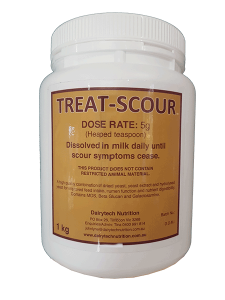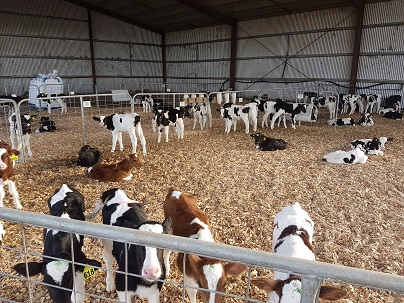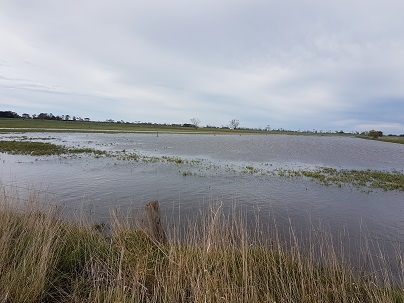Colostrum – Your Herd’s and Your Future
This article is based on and draws from a presentation by Mike van Amburgh, professor at Cornell University, delivered to the Western Canadian Dairy Seminar 2018.
Our dry cow is not producing IgG’s, she’s producing colostrum. Colostrum is far more than potential immune transfer to the new born calf. When the cow dries off there are many things going on in her mammary glands. Enormous amounts of cell proliferation driven by ‘growth factors’ and hormones that end up in colostrum. Our checking of colostrum quality for specific gravity (thickness) or with a Brix meter has ignored this massive physiological activity.
For example; the hormone relaxin. Reproductive physiologists working with pigs discovered a female piglet who receives relaxin in its first meal is likely to have a larger uterus and be more fertile than a piglet that does not receive relaxin. Our concern for protein, fat and immunoglobulins overlooks the litany of other ingredients such as: steroids, lactoferrin, insulin, glucagon, prolactin, growth hormone, IFG-1, leptin, TGF-alpha, cortisol and estradiol. These are all bioactive and drive metabolism.
In a research project at Cornell, calves fed 2 lts of colostrum were matched against those receiving 4 lts. Their diets were identical after this colostrum administration. The 4 lt colostrum calves had a 6 kg higher weaning weight than the 2 lt group. At 80 days old, the calves that gained 120 g more daily (4 lt group), had higher hip height implying they used dietary nutrients more efficiently. What colostrum did was set them up to be better animals.
Research has identified, various components of colostrum elicit biological responses, enhancing protein synthesis, increased enzyme expression and increased gastrointestinal tract development. This equates to more lean tissue while increased enzyme activity increases digestive capacity. Increased gastrointestinal tract enables more area to absorb nutrients and provides a better barrier to protect the calf from disease causing organisms and a better immune system.
From our own observations, ensuring adequate protein in the transition diet of the dam is critical for production of very high quality colostrum.
The calves that received 4 lts of colostrum had higher circulating glucose which continued for several days. Van Amburgh suspected this was due to higher intake of insulin at first feed. Insulin is responsible for the transport of glucose and there is a correlation between insulin and passive transfer of Ig for immunity. Although Ig absorption reduces dramatically within 24 hrs post-birth, for the benefit of the multitude of other beneficial ingredients in colostrum, it is recommended to feed colostrum for four days.
Following our setting up of our calves with 4 lts of high quality colostrum, then follows supplying adequate energy to take full advantage of the start we’ve given that calf; and there a few surprises in this.
In a thermo-neutral environment, a 40 kg calf requires 6.7 MJME of energy/day. However, at freezing point, that jumps to 13.5 MJME of energy – DOUBLE! A surprise to me was the knowledge of, and effect of skin to body weight ratio. A Jersey calf has 20% more skin surface area to body weight than a Holstein. Mother knows best: the Jersey dam puts higher fat into her infant formula. However, it is no wonder if we feed a Jersey calf 20:20 milk replacer it does not do well.
So what does all this add up to at the business end? Meta-analysis over a large number of heifers showed a 1,540 lts higher milk production in first lactation from additional daily gain prior to weaning. This is dramatic, and when compared to improved milk production from genetic gain, the figures are astounding, especially when this is a simple management issue: the data showed a 22% variation between the 2 lt and 4 lt colostrum calves in first lactation compared to 7% from genetic selection. This comes as no surprise because we know full well, feeding a dairy cow well has far greater impact on milk production and profit than genetics.
The dam is sending information in the form of colostrum components to set up her calf for a successful life. Unfortunately, our human intervention can certainly short-circuit this process. Our focus on both quality of colostrum and adequate volume administration probably borders on one of our best investment.











